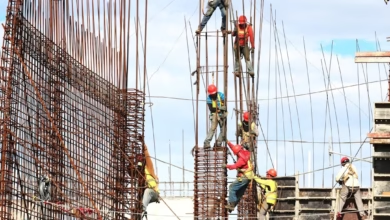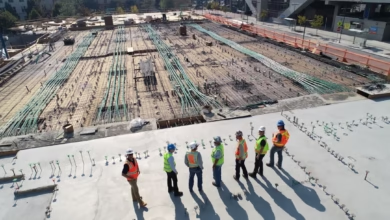Preventing Metal Corrosion: Strategies for Protecting Industrial and Precious Metals in a Sustainable Future

Metal corrosion presents a significant challenge across various industries, impacting everything from construction metals to aerospace metals, and even precious metals like gold and silver. Understanding the types and causes of metal degradation is crucial for effectively managing and preventing corrosion. This article delves into the complexities of metal corrosion, exploring its impact on both industrial and precious metals, including ferrous and non-ferrous variants. As we examine effective strategies for protecting metals, we will highlight innovative methods that not only safeguard these materials but also promote sustainable metal production and recycling techniques. With a focus on the latest trends in metallurgy, including the use of metal alloys and the growing importance of battery metals like lithium and cobalt, this discussion will provide valuable insights for industries reliant on metals. Whether you’re involved in metal fabrication, investing in metal commodities, or interested in the future of metal mining, this article will equip you with the knowledge needed to navigate the challenges of metal corrosion and embrace the advancements in metal protection.
- 1. Understanding Metal Corrosion: Types, Causes, and Impact on Industrial and Precious Metals
- 2. Effective Strategies for Protecting Ferrous and Non-Ferrous Metals from Degradation
- 3. The Future of Metal Protection: Innovations in Sustainable Metal Production and Recycling Techniques
1. Understanding Metal Corrosion: Types, Causes, and Impact on Industrial and Precious Metals
Metal corrosion is a natural process that leads to the degradation of metals, significantly impacting both industrial and precious metals. Understanding the types, causes, and effects of corrosion is crucial for effective management and prevention strategies in various sectors, including construction, automotive, aerospace, and jewelry.
Corrosion can be classified into several types, with the most common being uniform corrosion, galvanic corrosion, pitting corrosion, and crevice corrosion. Uniform corrosion occurs evenly across a surface, typically affecting base metals like steel and aluminum. Galvanic corrosion happens when two dissimilar metals, such as copper and zinc, are in contact in the presence of an electrolyte, leading to accelerated deterioration of one of the metals. Pitting corrosion, often seen in stainless steel and other alloys, results in localized holes or pits, while crevice corrosion occurs in shielded areas where stagnant liquid is present.
The causes of metal corrosion are multifaceted, including environmental factors such as moisture, temperature, and pollutants. For industrial metals, exposure to harsh chemicals and corrosive agents can accelerate degradation. In the case of precious metals like gold and platinum, corrosion is less common but can still occur, especially when subjected to certain chemicals or extreme conditions.
The impact of corrosion on metals is substantial, leading to significant economic losses in metal mining and manufacturing sectors. For instance, in the construction industry, corrosion of steel can compromise structural integrity, necessitating costly repairs and replacements. In the automotive and aerospace sectors, metal corrosion can lead to safety hazards and increased maintenance costs. Additionally, in the realm of metal commodities and gold or silver investing, corrosion can diminish the value of metal assets, making effective management crucial.
Sustainable metal production practices are becoming increasingly important to mitigate corrosion and its effects. Techniques such as metal recycling not only reduce the demand for new raw materials but also lower the environmental impact associated with metal degradation. Furthermore, advances in metallurgy, including the development of corrosion-resistant metal alloys, are essential in extending the lifespan of metals used in various applications, from energy metals like lithium in batteries to construction metals that form the backbone of infrastructure.
In summary, understanding metal corrosion—its types, causes, and impacts—is critical for industries reliant on metals. By adopting effective prevention and management strategies, stakeholders can protect their investments in metals, whether they are precious metals for jewelry and investing or industrial metals for production and fabrication.
2. Effective Strategies for Protecting Ferrous and Non-Ferrous Metals from Degradation
Metal corrosion poses a significant challenge to various industries, affecting both ferrous and non-ferrous metals. Effective strategies for protecting these metals from degradation not only extend their lifespan but also enhance their performance in diverse applications, from construction metals to aerospace metals. Here are some key strategies:
1. **Coatings and Paints:** Utilizing protective coatings is a widely adopted method in metallurgy. For ferrous metals like steel, zinc coatings (galvanization) provide a sacrificial layer that protects underlying metal from corrosion. Non-ferrous metals, such as aluminum and copper, can also benefit from specialized paints that prevent oxidation and enhance durability.
2. **Cathodic Protection:** This technique involves using a sacrificial anode made from a more reactive metal to protect valuable metals from corrosion. It is particularly effective in marine environments and is used extensively in the protection of pipelines and storage tanks made from both ferrous and non-ferrous metals.
3. **Corrosion Inhibitors:** These chemicals can be added to the environment surrounding metals to slow down the corrosion process. For instance, in industrial applications, corrosion inhibitors can be mixed with water in cooling systems to protect steel and other metals from degradation.
4. **Alloying and Material Selection:** The development of metal alloys that are resistant to corrosion is crucial. For example, stainless steel is an alloy that combines iron with chromium, providing exceptional resistance to rust. In the case of non-ferrous metals, using alloys like bronze or brass can increase resistance to corrosion while maintaining desirable mechanical properties.
5. **Regular Maintenance and Inspections:** Implementing a routine maintenance schedule is essential for identifying early signs of corrosion. Regular inspections can help detect and address issues before they escalate, ensuring the longevity of metals used in construction, automotive, and energy sectors.
6. **Environmental Control:** Reducing exposure to corrosive environments is vital. For example, controlling humidity levels and minimizing the presence of corrosive agents can significantly prolong the life of metals, particularly in industrial settings.
7. **Sustainable Practices:** Emphasizing sustainable metal production and recycling not only addresses environmental concerns but also promotes the longevity of metals. By using recycled metals, industries can reduce the demand for new metal mining, thus lessening the overall impact on the ecosystem while maintaining a supply of quality materials.
By implementing these strategies, industries can effectively manage metal corrosion and degradation, ensuring the durability and performance of both ferrous and non-ferrous metals in various applications, from jewelry metals to battery metals. Investing in proper protection techniques will ultimately lead to cost savings and enhanced sustainability in metal fabrication and production.
References:
– Callister, W. D., & Rethwisch, D. G. (2018). Materials Science and Engineering: An Introduction. Wiley.
– Schütze, M. (2014). Corrosion of Metallic Materials. Wiley.
– ASTM International. (2020). Standard Guide for Corrosion Testing of Metals. ASTM G1-03.
3. The Future of Metal Protection: Innovations in Sustainable Metal Production and Recycling Techniques
The landscape of metal protection is evolving rapidly, driven by a pressing need for sustainability and efficiency in metallurgy. Innovations in sustainable metal production and recycling techniques are at the forefront of this transformation, addressing both the challenges of metal corrosion and the demand for eco-friendly solutions.
One of the most promising advancements is the integration of metal recycling processes, which not only conserves resources but also significantly reduces the environmental impact of metal mining. For instance, recycling ferrous metals, such as steel and aluminum, can lower production emissions and energy consumption by up to 75% compared to traditional methods. This trend is vital as industries seek to minimize their carbon footprints while maintaining the quality of construction metals and automotive metals.
Furthermore, the emergence of 3D printing metals is revolutionizing the fabrication process, allowing for the creation of complex metal alloys with precision. This technique can reduce material waste and lead to more efficient use of precious metals like gold and platinum, which are often utilized in jewelry and high-end applications. As 3D printing continues to develop, it opens new avenues for designing components that are not only lighter and stronger but also more resistant to corrosion.
In addition to these advancements, the field of energy metals, such as lithium and zinc, is witnessing innovative recycling techniques to recover valuable materials from used batteries and electronic devices. This not only addresses the scarcity of rare earth metals but also promotes a circular economy where materials are reused rather than discarded. The focus on sustainable metal production is also influencing the development of refractory metals, which are crucial in high-temperature applications, ensuring they remain viable for future uses.
As the industry moves forward, the trend toward sustainable practices will likely drive investment in metal commodities, including silver investing and gold investing, as investors become increasingly aware of the long-term benefits of environmentally responsible sourcing and production. With the ongoing advancements in metallurgy and metal protection strategies, we can anticipate a future where metal corrosion is managed more effectively, and the lifecycle of metals is extended through innovative recycling and production techniques. This proactive approach will not only safeguard our valuable metal resources but also contribute to a more sustainable future for industries reliant on metals across various sectors, from aerospace to construction.
In conclusion, understanding metal corrosion is crucial for safeguarding both industrial and precious metals from degradation. As we explored, the various types and causes of corrosion can significantly impact the longevity and performance of materials such as ferrous and non-ferrous metals. Implementing effective protection strategies—ranging from proper coatings to advanced metallurgical techniques—plays a vital role in the preservation of these valuable resources.
Looking ahead, the future of metal protection lies in embracing innovations in sustainable metal production and advanced recycling techniques. By leveraging the latest trends in metallurgy, including the development of metal alloys and the use of 3D printing metals, industries can enhance the resilience of construction metals, aerospace metals, and automotive metals while minimizing environmental impact.
As the demand for rare earth metals and battery metals grows, particularly in sectors such as energy and automotive, understanding and managing metal corrosion becomes even more critical. Investing in gold, silver, and other metal commodities not only serves as a financial strategy but also emphasizes the importance of sustainability in metal mining and fabrication. By prioritizing metal recycling and responsible practices, we can ensure a future where the integrity of metals—be it steel, aluminum, copper, zinc, platinum, or palladium—is maintained for generations to come.
In a world increasingly reliant on metals, from jewelry metals to energy metals, proper management of metal corrosion is essential for both economic and environmental sustainability.





